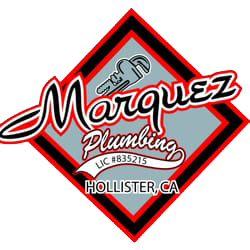How To Know If You Have A Clogged Sewer Line
It’s one of every homeowner’s worst fears…you’re about to sit down to a nice holiday meal when the smell of turkey is suddenly overpowered by raw sewage backing up into your floor drains.
Not only is your meal ruined, but you’re worried about the damage done, the cost of the repair, and the unpleasant task of the clean up.
Fortunately, you don’t have to let it get this far. If you listen to what your home is telling you, you can identify sewer line clogs and have them repaired before they get out of hand.
Here’s how:
1. Pay Attention To Clogged Drains And Toilets
Clogs can occur in either main or secondary sewer lines. The most common indicators of a clogged line is water backing up in your drains or toilet, and gurgling sounds coming from your drains.
A secondary sewer line clog is less severe, but still needs your attention before it becomes worse.
To help identify what kind of clog you have, pay attention to where your water is backing up. If it’s just a secondary line, like a sink, the sink will struggle to drain and it may back up in your bathtub – but your toilet and other fixtures in your house should remain unaffected.
If the issue is your main sewage line, more than one drain is probably moving slowly, backing up, and any water you run in the home will cause your toilet to gurgle.
You will likely see foul smelling, backed up water in your tub and even in your basement. This indicates a main sewage line problem and will need immediate attention.
2. Check For Drainage In Your Sewer Clean Out
If you still aren’t positive what kind of clog you’re dealing with, check your sewer clean out.
Locating your sewer clean out can be tricky.
“Start looking in the places where the sewer line cleanout is most likely to be. The cleanout is usually a 4-inch-diameter pipe with a screw cap that has a square knob or indentation on the top.
It’s most likely going to be popping up from the ground outside your home between the foundation and the street. The cleanout might also be on the side of the home, closest to the bathroom.”
Once you locate your cleanout, identifying a clog should be pretty easy. If you have sewage in, or draining out, of your clean out you have a main sewer clog.
If you have trouble locating your cleanout, or you are unsure of how to deal with the issue once you find it, it’s always a good idea to contact a professional.
Reasons for a clogged drain
Once you’ve identified a clog, you may wonder why it happened in the first place.
Some common clog factors are:
- Tree roots – especially in older homes
- Feminine hygiene products
- Paper towels
- Toilet paper – check your brand and ply and make sure it’s safe for your type of system

Solutions
If you have a main line clog you can attempt a fix yourself.
- Put on gloves and protective gear – this may get messy.
- Open the cap to your drain line and let any buildup drain out.
- Feed a plumbing snake into your drain until you hit the clog.
- Run the snake until the clog is cleared – you’ll know when you’ve had success because the water level in your drain pipe will start to decrease. Once it drains entirely, your clog should be cleared.
- Rinse down the pipe and plumbing snake with a hose, and remove the snake
Word of caution: if your clog is caused by a tree root, you will not be able to remove with traditional methods.
If these steps don’t work, it’s best to call a professional for an evaluation.
Prevention
In an ideal world, everyone would adopt good plumbing practices and never have to deal with severe clogs.
To decrease your chances of having a clogged drain, you can follow these methods:
Clean Your Drains
“The simplest thing you can do to keep your drains clear is to use a drain cleaner once a month. There are quite a few different cleaners available, but it is recommended that you use an enzyme cleaner instead of a chemical-based cleaner.
Enzyme cleaners are better for your pipes, your health and the environment overall than the harsh chemicals that are frequently used in commercial cleaners.”
Keep Roots Away From Lines
If possible, obtain your house plans. These will help you identify where your sewer lines are located.
Once you have this knowledge, you can keep a close eye on trees and shrubs that may grow and cause root issues down the road.
Watch What You Flush
Do some research and make sure you are only flushing the appropriate ply toilet paper down your toilets.
Always provide a wastebasket for feminine hygiene products and make sure your family knows to keep wipes and paper towels out of the toilet.
Get A Professional Cleaning Once A Year
Getting your sewer lines cleaned every year or so may be an irritating expense, but considering a sewer line replacement can cost between $8,000 and $30,000 it’s a preventative measure well worth taking.
Free Plumbing Estimate
We provide free estimates for all our customers.
